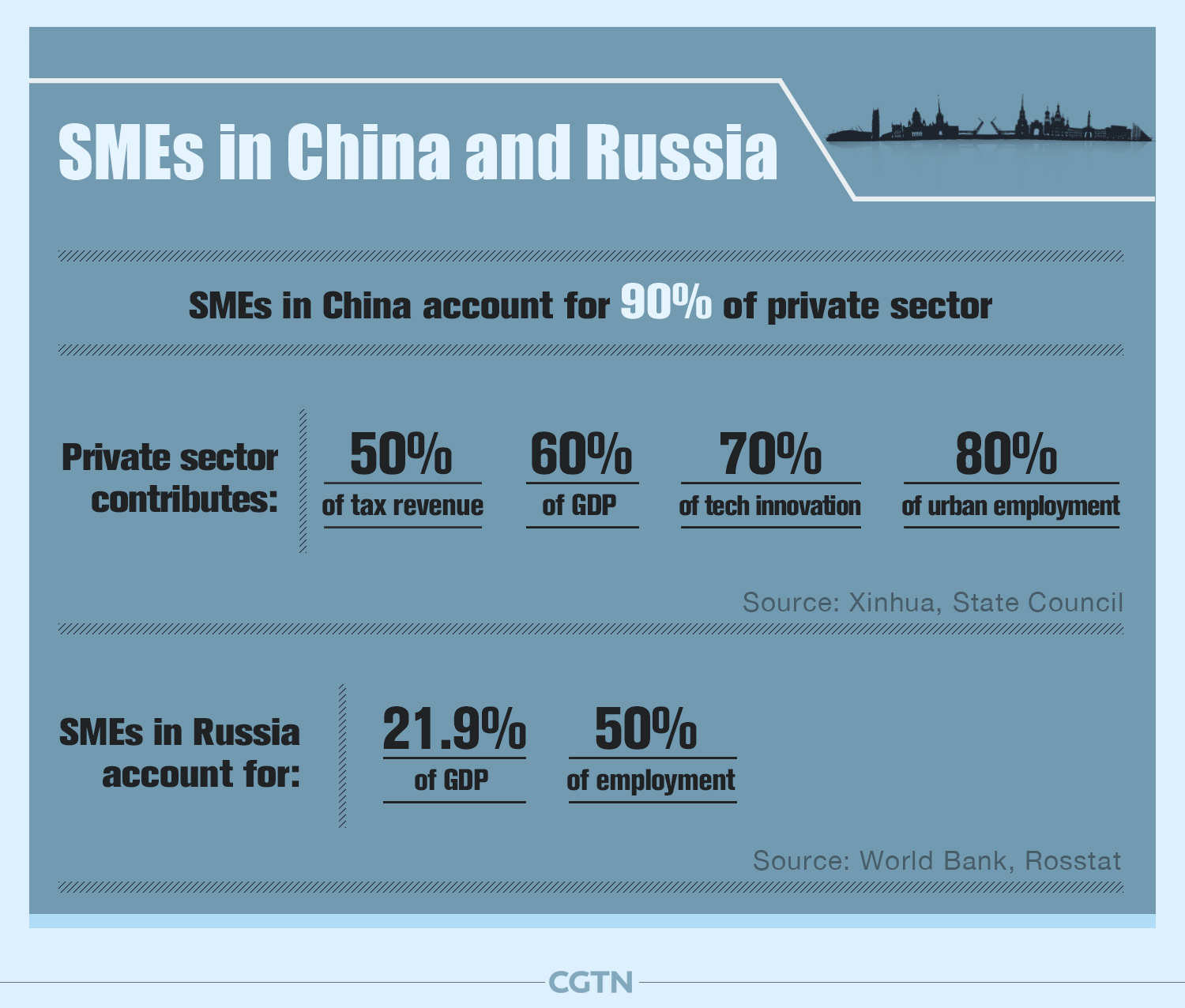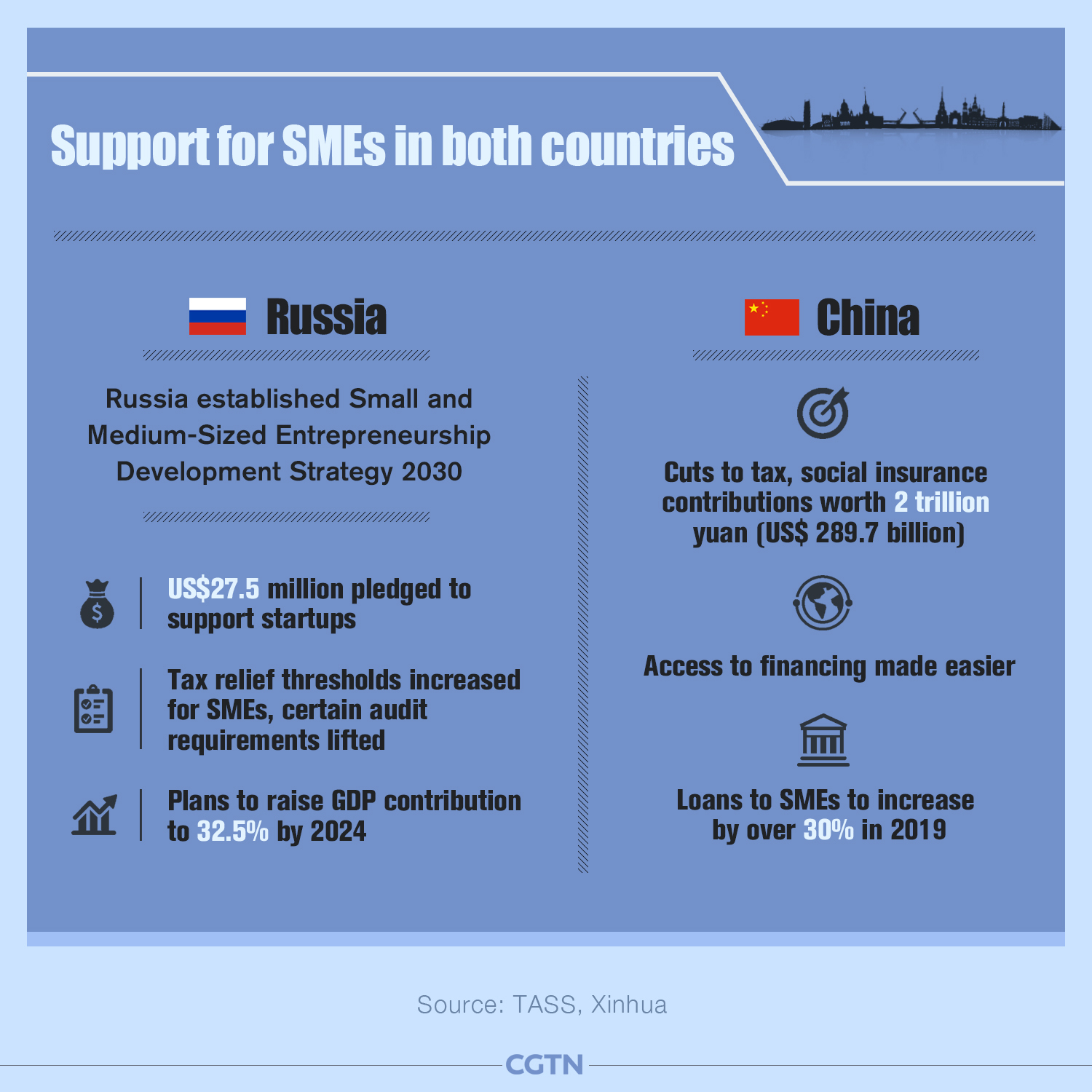
Economy
16:56, 03-Jun-2019
China-Russia SME cooperation to continue driving growth and trade
CGTN

Cooperation between Chinese and Russian small- and medium-sized enterprises (SMEs) has been a key driver of developing economic ties between the two countries in recent years, a trend that is set to continue thanks to technology, e-commerce and growing support for SMEs from each country.
Bilateral trade surpassed 100 billion U.S. dollars for the first time in 2018, a 27.8 percent year-on-year increase that marked an all-time high.
The private sector and SMEs from both sides played a vital role in the surge in trade, with small businesses benefiting from closer China-Russia ties and cooperation in areas such as e-commerce.

CGTN infographic
CGTN infographic
According to The Moscow Times, online exports of Russian goods increased by 36 percent in 2018 to 746 million U.S. dollars. Just two years earlier, only 0.3 percent of Russian SMEs were using the Internet to sell their goods.
The future for Russian SMEs looking to sell their goods online overseas is bright, according to a study by the Gaidar Institute. By 2024, the entire Russian e-commerce market could be worth 43 billion U.S. dollars.
Online trade for SMEs has also benefited Chinese businesses looking to increase business with Russia. Last year, Alibaba established a two billion U.S. dollar joint venture with Mail.ru Group, with both companies looking to share their online marketplaces. This would give Chinese online merchants access to 140 million extra customers.
This platform, which will see both sides share customers as well as data, complements other ongoing projects between China and Russia that aim to develop ties between SMEs on both sides.
Cross-border economic cooperation zones, such as the Heilongjiang-Blagoveshchensk zone, are fostering closer brick-and-mortar trade and cooperation between Chinese and Russian SMEs.

CGTN infographic
CGTN infographic
According to Global Times, most of the companies in a cross-border import and export industrial park in Heihe, northeast China's Heilongjiang Province are SMEs, with cargo volume in the first half of 2017 hitting 175,000 tons.
Beijing and Moscow have both pledged greater support for SMEs and the private sector in recent years. China has announced several measures this year to ease access to financing and cut costs for SMEs, with Premier Li Keqiang saying “when SMEs are vibrant, our economy will bloom as well” during the Two Sessions in March.
In 2016, Russia formulated the Small and
Medium-Sized Entrepreneurship Development Strategy 2030. The strategy aims to raise SME employment and GDP contribution through cutting taxes and bureaucracy.
Under the strategy, Russian President Vladimir Putin has earmarked 2024 as a milestone year for the country's SMEs, with state companies set to increase spending on goods and services from SMEs to five trillion rubles per year (76.9 billion U.S. dollars).
Attending an event held last year by the All-Russian Non-Governmental Organization of Small and Medium-Sized Business, Putin said that the contribution of small and medium-sized businesses to GDP should exceed 30 percent by 2024, up from 20 percent in 2018.
The Russian president also expects employment within SMEs to increase from 20 million to 25 million over the same period.

SITEMAP
Copyright © 2018 CGTN. Beijing ICP prepared NO.16065310-3
Copyright © 2018 CGTN. Beijing ICP prepared NO.16065310-3